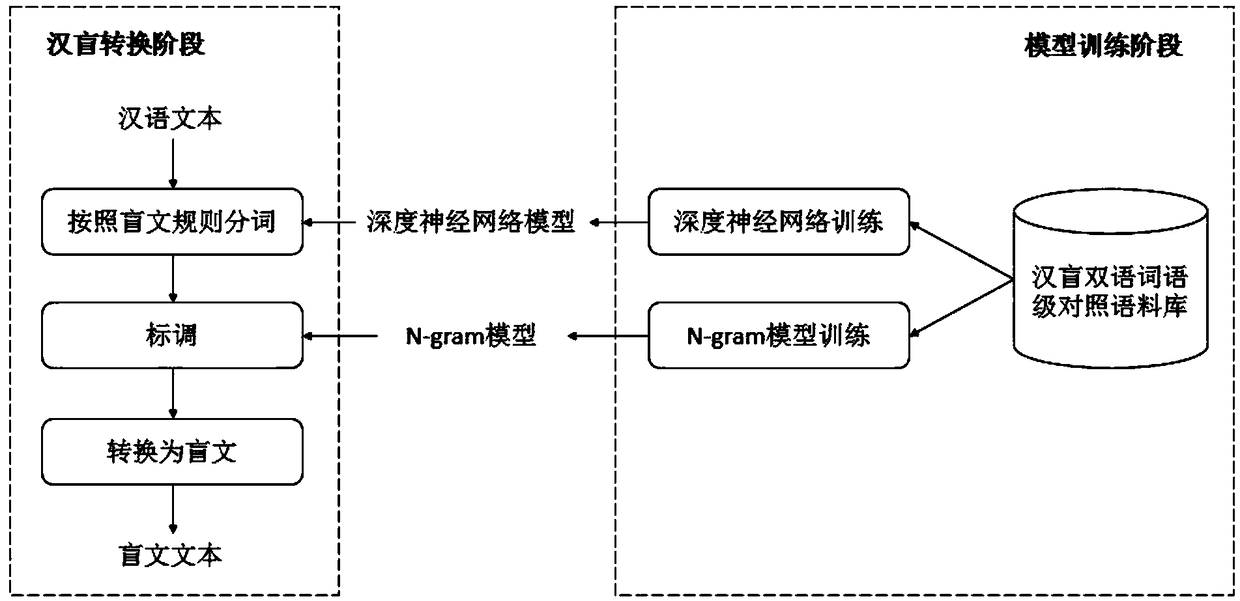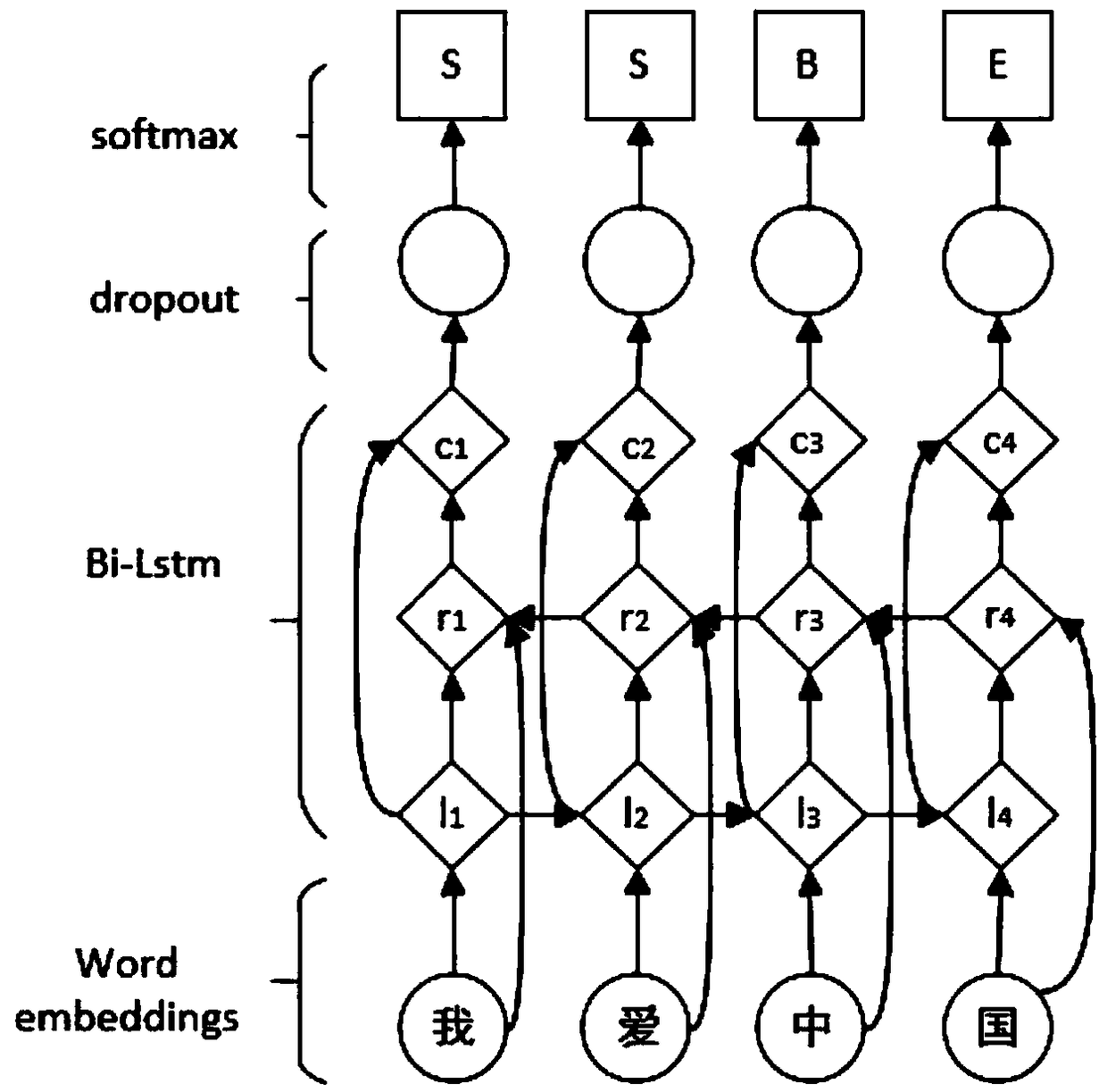A Chinese-blind automatic conversion method and system based on depth neural network
A deep neural network and automatic conversion technology, applied in natural language translation, natural language data processing, special data processing applications, etc., can solve problems such as homophonic confusion of single words, difficulty in computer processing, difficulty in reading for blind people, etc., to improve accuracy rate, improving the ability to obtain information, and the effect of high accuracy
- Summary
- Abstract
- Description
- Claims
- Application Information
AI Technical Summary
Problems solved by technology
Method used
Image
Examples
Embodiment Construction
[0035] In order to make the above-mentioned features and effects of the present invention more clear and understandable, the following specific examples are given together with the accompanying drawings for detailed description as follows.
[0036] Braille is a kind of phonetic writing. Many Braille rules have been formulated in the Chinese Braille Standards to specify how to write Braille, the most important of which are the word segmentation rules for Braille. The word segmentation rule stipulates how to separate sentences composed of continuous Chinese characters into words in Braille, which is actually equivalent to the word segmentation rules of Braille. , prepositions, and monosyllabic degree adverbs should be written consecutively". This requires phrases in Chinese such as "can't", "not good" and "not to" to be written consecutively in Braille. The "Braille rules" in "Segmenting Chinese character strings according to Braille rules" in this article refers to the rules f...
PUM
 Login to View More
Login to View More Abstract
Description
Claims
Application Information
 Login to View More
Login to View More - R&D
- Intellectual Property
- Life Sciences
- Materials
- Tech Scout
- Unparalleled Data Quality
- Higher Quality Content
- 60% Fewer Hallucinations
Browse by: Latest US Patents, China's latest patents, Technical Efficacy Thesaurus, Application Domain, Technology Topic, Popular Technical Reports.
© 2025 PatSnap. All rights reserved.Legal|Privacy policy|Modern Slavery Act Transparency Statement|Sitemap|About US| Contact US: help@patsnap.com


